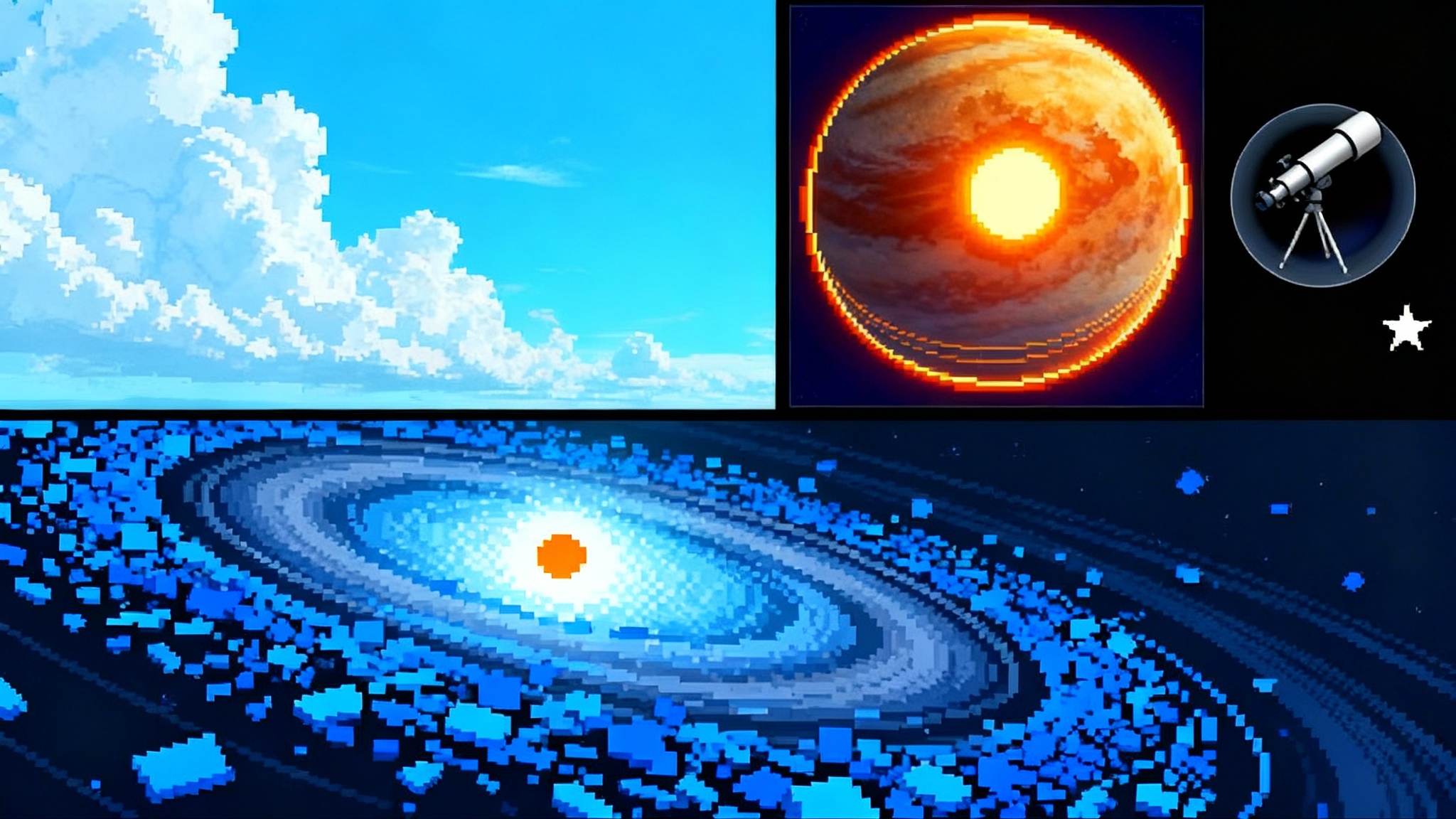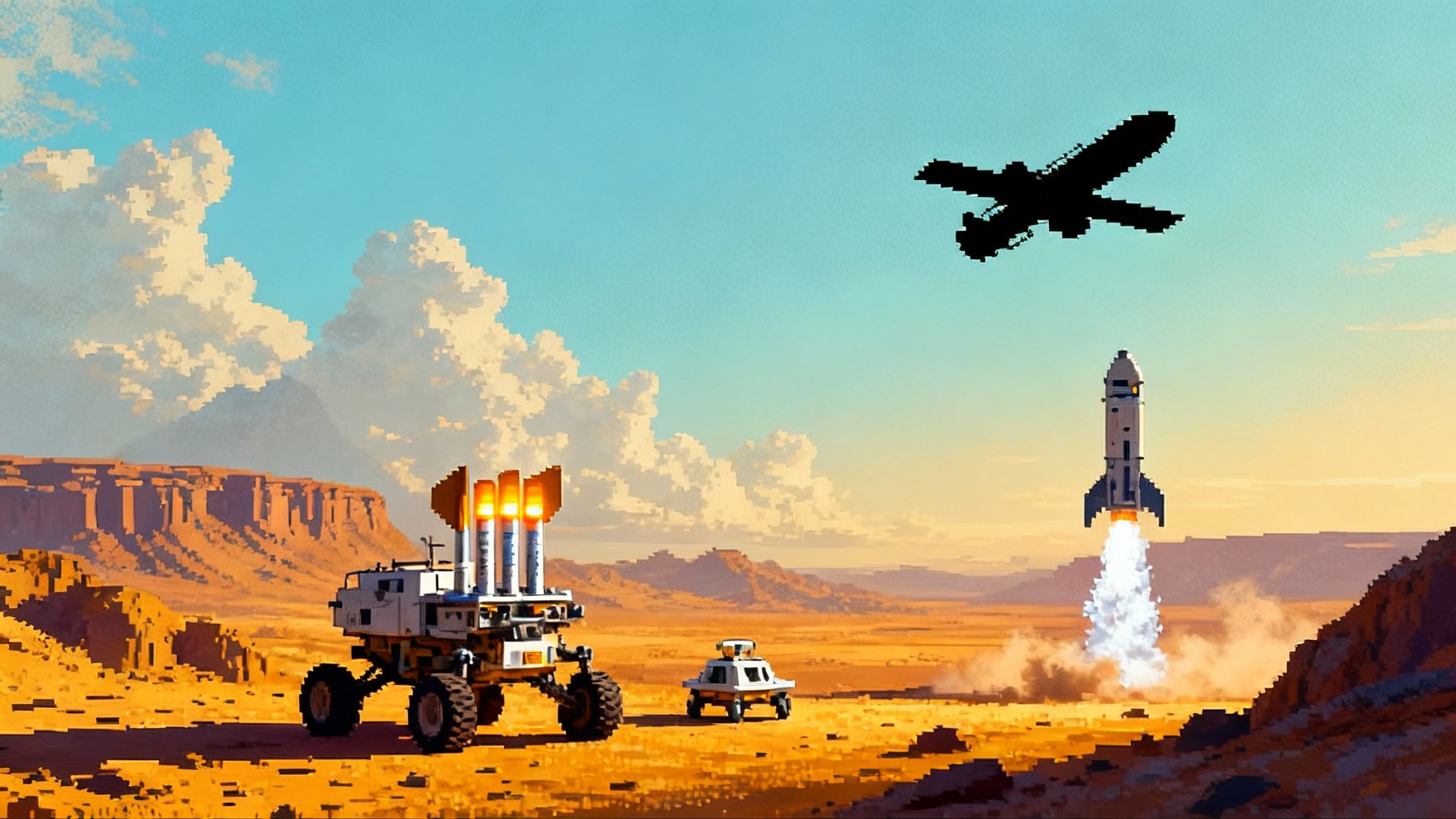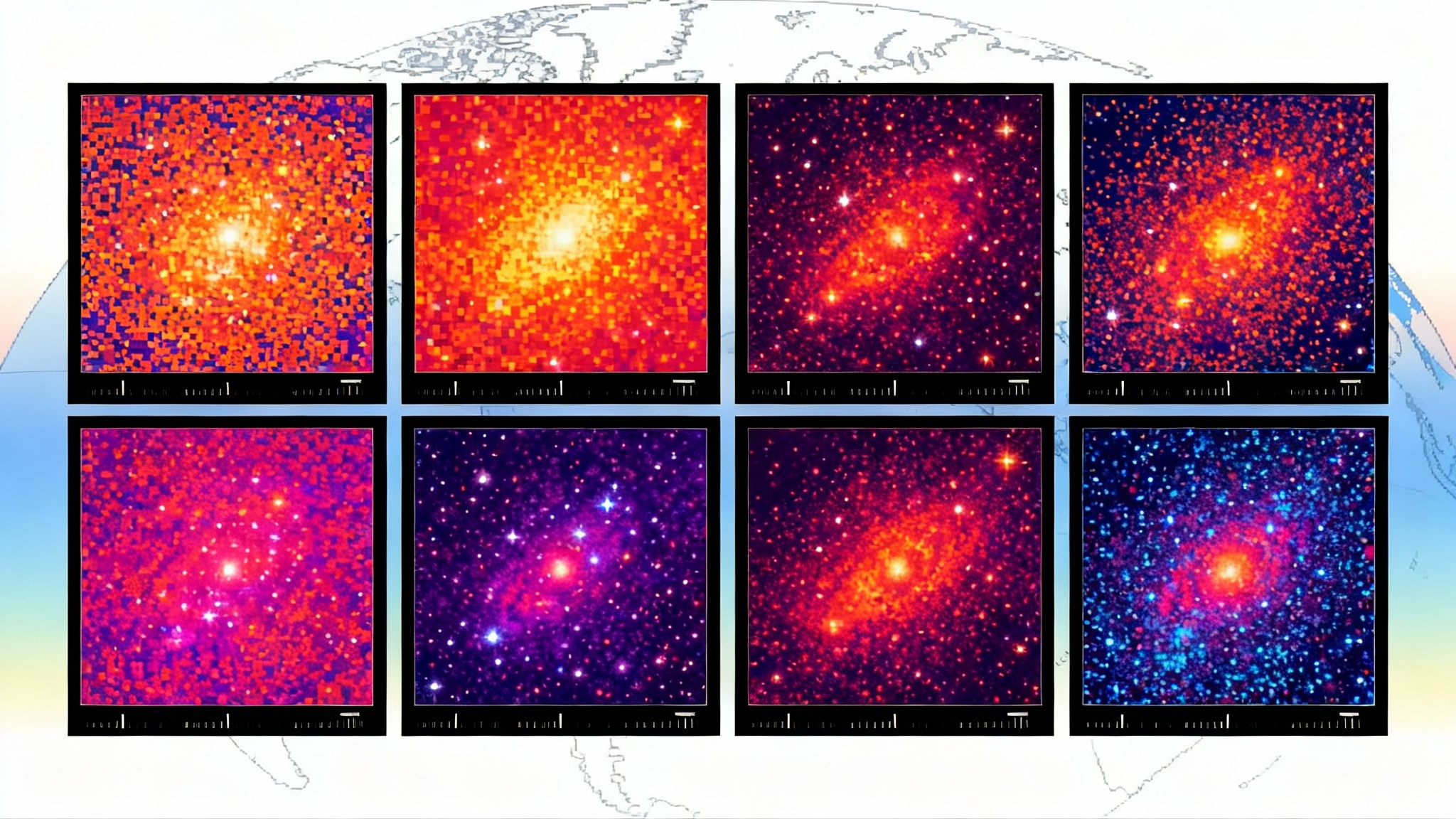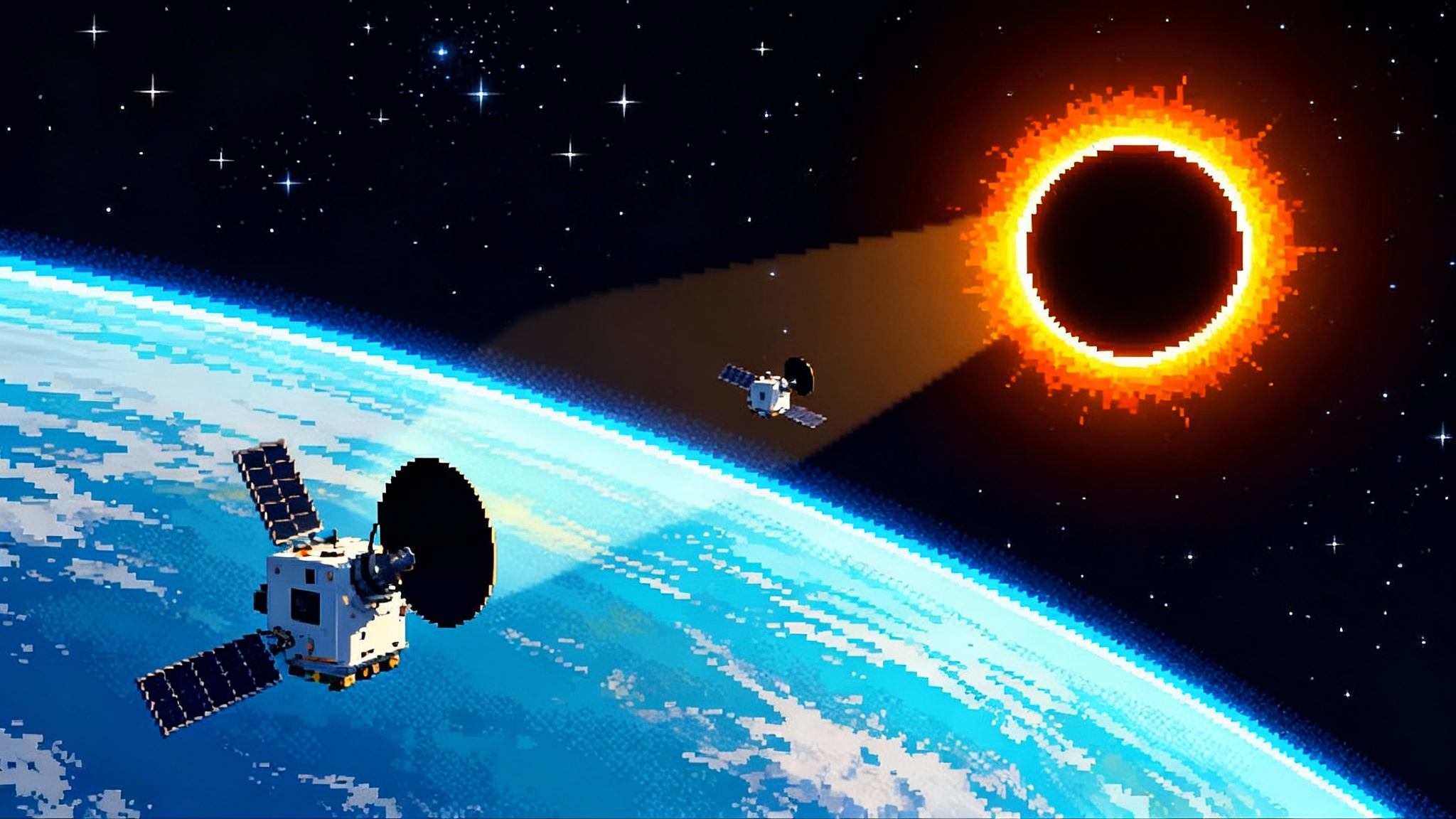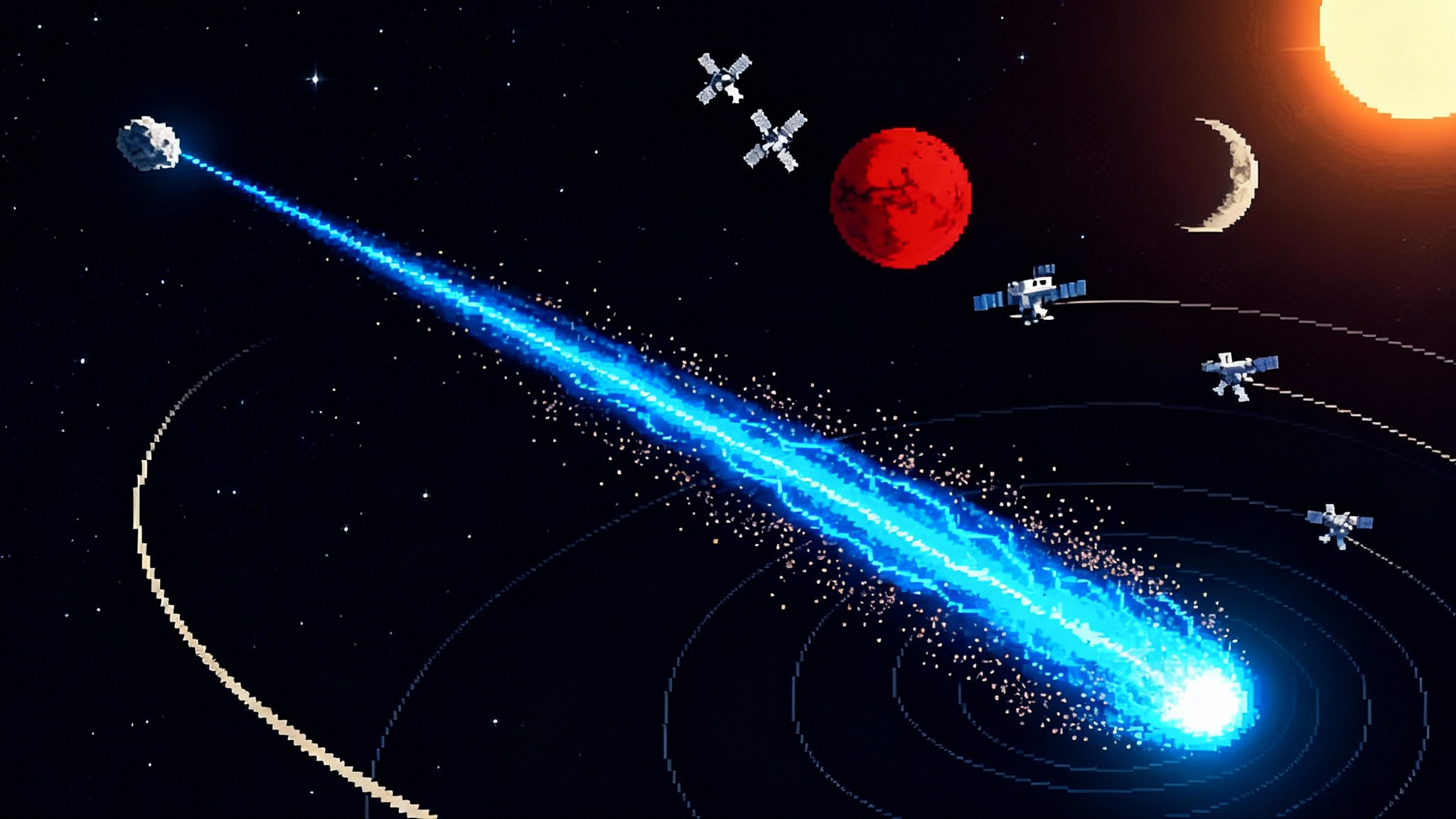CLPS Turns the Corner: After Blue Ghost, the Moon Gets Real
Firefly’s Blue Ghost touched down in March 2025 and worked a full lunar day, showing commercial landers can deliver. Here is what the mission taught engineers, what flies next, and the infrastructure stack CLPS needs by 2026 and 2027.
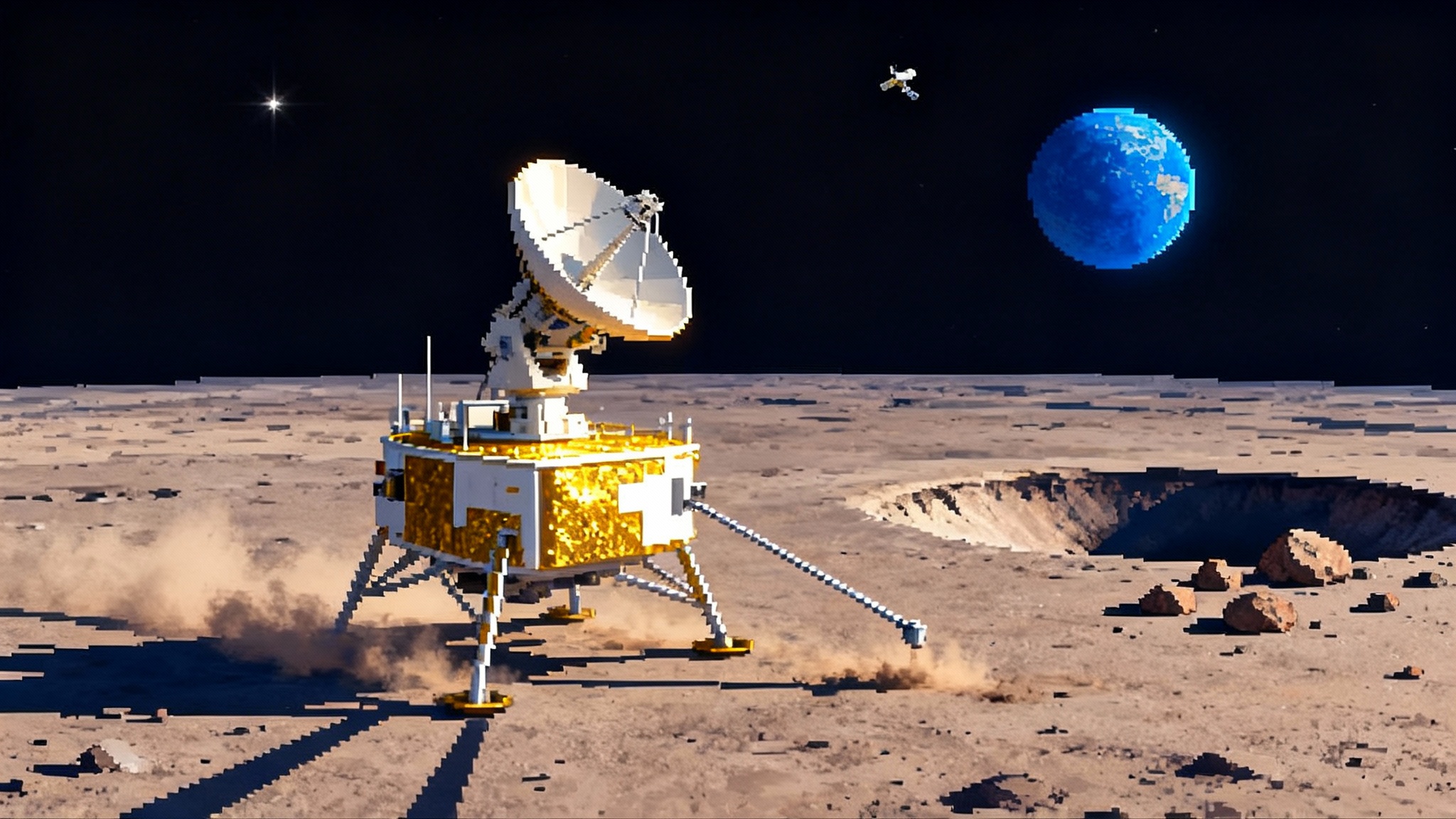
The switch flipped in March 2025
On March 2, 2025, Firefly Aerospace’s Blue Ghost landed in Mare Crisium near Mons Latreille and then worked through a full lunar day. It delivered ten NASA instruments and sent back science until sunset, with several hours of operations into lunar night. For the Commercial Lunar Payload Services program, that moment felt like a page turn. Commercial delivery to the Moon moved from aspiration to routine planning. NASA confirmed the landing and the two week surface operations window, which set the cadence and expectations that follow. NASA’s landing report made the milestone plain.
The details mattered even more than the headline. Blue Ghost met 100 percent of mission objectives, executed precision powered descent, chose a safe site in real time, and kept talking until the Sun dropped below the horizon. The mission left a small catalog of firsts that engineers can build on: a navigation payload tracked Global Navigation Satellite System signals at the surface, plume cameras recorded how dust moves under a lander, a regolith sampler worked as designed, and dust mitigation hardware pulsed away grit from optical and thermal surfaces. The hard part was not getting there. The hard part was doing useful work fast and reliably under tight power margins and abrasive dust. For the longer term, this points toward a resilient lunar PNT backbone such as the Moonlight and LunaNet navigation grid.
What Blue Ghost taught the engineers
Think of a commercial lunar lander as a pickup truck that also has to choose its own parking space on a windy, unpaved cliff. Blue Ghost showed where the truck is already good and where the road still needs to be built.
-
Vision navigation and real time landing site selection
Blue Ghost’s descent cameras and onboard autonomy identified hazards and selected safe terrain in the final minutes. That is the difference between hoping a preselected spot is clean and proving that the lander can sidestep boulders at the last second. Even a 50 meter divert can change a mission’s fate. The takeaway: terrain relative navigation must be standard, with redundant altitude sensing and dust tolerant optics. If you can fuse at least two altimetry sources and keep a clean field of view, you lower the chance of tipping or short leg landings. -
Dust is both a fluid and a sandblaster
Descent plumes fluidize regolith and loft fine grains that cling to everything. Blue Ghost flew payloads that measured plume dynamics and tried active dust removal. The operational lesson is simple. If it can be abraded or coated, it will be. Protect radiators with sacrificial shields, design antennas to self shed dust with gravity or vibration, route cabling and harnesses away from line of sight ejecta, and give cameras hoods and heaters. Put anything that must stay clean behind an overhang or on a mast that can swing away from the plume during final throttle down. -
Thermal and power budgets rule the mission
Blue Ghost worked for roughly 14 Earth days and even stole a few hours of lunar night. That was not luck. It was a power budget that prioritizes duty cycles, high rate downlinks during the warmest hours, and battery conditioning near sunset. The lesson for future payloads is to design for sprints, not marathons. Operate high power drills, spectrometers, and transmitters in short bursts and cache data locally for scheduled downlinks while the arrays are best aligned to the Sun. -
Communications bandwidth is part of the science plan
An X band antenna on a gimbal and a ground network that does not blink at terabytes of images and telemetry are just as critical as propellant margins. If a mission plans to deliver high rate science or video, allocate pointing time and power for communications as a payload, not an afterthought. -
Fast surface access multiplies scientific return
On Blue Ghost, a sampling arm and compact surface packages turned a static lander into a small worksite. The model is clear. Short reach is still reach. A one meter deployable arm or a shoebox rover can enable drilling, scooping, and instrument relocation that doubles the value of a single touchdown.
The near term cadence, updated and realistic
The point of an inflection is what comes next. After March 2025, several deliveries define the commercial Moon through 2027.
-
Intuitive Machines IM‑2 proved the south pole is unforgiving
Intuitive Machines’ second Nova‑C lander, Athena, reached the south polar region in early March 2025 and came to rest on its side after a near target touchdown. Despite the attitude issue and harsh crater lighting, teams powered payloads for hours and collected valuable data. NASA later reported that PRIME‑1’s drill and mass spectrometer executed partial test objectives before power fell off. The outcome is a sharp lesson in redundancy for altimetry, landing legs, and solar array geometry at low Sun angles. It also showed that technology demos can still pay off under off nominal conditions. See NASA’s summary of PRIME‑1 results for what worked and why it matters. NASA on PRIME‑1 performance. -
Griffin‑1’s south pole delivery has slipped to 2026
Astrobotic’s heavy Griffin lander, originally aligned with NASA’s VIPER rover, was rebaselined after VIPER’s cancellation. The company now targets mid 2026 for a south polar landing that will focus on demonstrating the lander and engines with a new payload mix, including a commercial rover. The engineering stakes are high. Griffin will test larger throttleable engines, a higher landing mass, and deck operations for bulk cargo. Success would unlock a class of deliveries measured in hundreds of kilograms rather than tens. -
Blue Ghost Mission 2 aims for the far side in 2026
Firefly plans a dual spacecraft configuration that pairs its Elytra orbital vehicle with a Blue Ghost lander. Elytra would drop the European Space Agency’s Lunar Pathfinder into lunar orbit, then serve as a relay for lander operations on the far side while also supporting a long duration radio astronomy payload during lunar night. This architecture is exactly what a durable supply chain looks like: one launch that seeds orbit with a communications asset and seeds the surface with mobile payloads. For the science context, see why Chang’e‑6 farside samples are reshaping priorities. -
IM‑3 and IM‑4 extend the map in 2026 and 2027
Intuitive Machines plans to deliver to Reiner Gamma in 2026 and return to the south pole in 2027. Reiner Gamma’s magnetic swirl is a geology and physics target that rewards precision surface navigation and low noise operations. A polar return will stress power, thermal, and terrain handling again. With those two flights, NASA can distribute fiducial markers, retroreflectors, and environmental sensors across multiple longitudes. That enables better cross calibration of orbital datasets with ground truth.
The infrastructure stack we need by 2026–27
Blue Ghost’s success is necessary but not sufficient. To turn CLPS into a durable lunar supply chain by 2026 and 2027, four layers need to click into place.
1) Relay communications that work anywhere
-
What is missing
When a lander drops behind the limb or into a crater, line of sight to Earth is gone. The far side and the deepest polar depressions need constant relay. On Blue Ghost Mission 2, Firefly’s Elytra and ESA’s Lunar Pathfinder are designed to provide that link. Commercial providers are also proposing small relay satellites that can ride along with lander missions. -
What to do
Treat relay as a service tier. Landers should buy downlink and uplink capacity from orbiting assets rather than reinvent the link every flight. Define simple, open interfaces for S band and UHF proximity links and X band or Ka band backhaul. Require every south pole and far side delivery after 2026 to either carry a path to relay or pre purchase capacity from an orbital asset. That makes schedule and data rates predictable. -
Why it matters
The difference between a two hour relay gap and an always on link is the difference between dribbling back telemetry and streaming high value science. It also unlocks night operations, when the far side becomes radio quiet for astronomy.
2) Autonomous navigation and landing that expects dust
-
What is missing
The engineering successes in 2025 still showed fragility. A single failed altimeter or a dust flashed camera can push a lander into a slope or a boulder field. -
What to do
Standardize a dual chain landing sensor suite: terrain relative navigation plus an independent, dust immune laser radar or radar altimeter. Add a simple occluder or air knife device to keep lenses usable through the last 500 meters. Require real time hazard maps down to the 25 centimeter scale and have legs that can tolerate at least 10 degrees of local slope without tipping. Keep a divert reserve of propellant sized for at least 200 meters of lateral motion. -
Why it matters
Every point of redundancy reduces downtime and lost payloads. Better navigation also shrinks the exclusion zones around hazards, which increases the number of usable landing sites near scientifically rich terrain.
3) Nighttime power and thermal habits
-
What is missing
Two week missions are not long enough for logistics or for polar resource mapping that crosses shadows. Surviving even a partial lunar night changes the economics of surface work. -
What to do
Fly at least three near term options in parallel. First, battery centric survival kits with radioisotope heater units or advanced heat switches that hold avionics above their cold limits for 24 to 72 hours. Second, polar vertical solar arrays placed by landers or compact rovers on locally high terrain, tied to tethers or wireless pads for short hop recharging. Third, modest fuel cells for ten to twenty hours of peak power in darkness. In parallel, mature a fission surface power demonstrator that can support multi kilowatt loads late in the decade. -
Why it matters
A lander that can power through even one lunar night transitions from a sprint to a shift schedule. That lets teams plan maintenance windows, reallocate power to heating, and resume with warm batteries at dawn instead of cold soaking sensitive components.
4) Surface logistics, not heroics
-
What is missing
Every mission that hand crafts deployment and sample handling loses time. A supply chain needs standardized interfaces, small helpers, and a shared playbook. -
What to do
Standardize a 50 to 100 kilogram pallet with common latching, power, and data ports that any lander or rover can handle. Equip landers with a short reach arm by default. Seed sites with compact couriers that ferry pallets 100 to 500 meters. Define dust tolerant connectors and quick release tethers that can be attached with simple tools or by autonomous end effectors. -
Why it matters
With plug and play payload pallets and short hop couriers, a lander’s touchdown point becomes a staging area, not a fixed lab bench. That flexibility multiplies the science and tech payoff of each delivery.
Concrete playbook for the next 18 months
Here is a short list that program managers, vendors, and investors can execute against with clear benefits.
-
Lock in relay service contracts now
If your 2026 mission touches the far side or the south pole, pre buy relay capacity or fly a piggyback relay satellite. The cost is modest compared to the risk of losing data in shadowed terrain. -
Freeze a dual sensor landing standard
NASA and providers should agree on minimum landing sensor redundancy and divert margins. Publish a short spec that CLPS task orders can cite. That will cut failure modes that have already appeared. -
Budget communications as a payload
Treat antennas, pointing time, and downlink sessions as their own line items with clear priorities. Do not let a power hungry instrument strangle the data path that proves it worked. -
Fly a night survival technology on every mission
Even a 24 hour night survival proves out heaters, seals, batteries, and software. Make it a habit, not a hail Mary. -
Ship at least one small courier with each south polar landing
A 10 to 30 kilogram rover or hopper that can move pallets a few hundred meters allows you to place instruments on a ridge, in a shadow, or over a particular rock without demanding pinpoint landing. -
Treat dust as a systems requirement
Put a dust budget in every review. Count how much dust will hit radiators and optics, and show how it gets removed or tolerated. Simple shields, electrodynamic dust removal, and smart placement beat after the fact heroics.
Why this changes the lunar business
The shift here is subtle but decisive. After Blue Ghost’s 2025 performance, customers can credibly plan for a lander to arrive in a given month, work for two weeks or more, and deliver calibrated data. That confidence pulls in payloads that pay for reliability: mining prospectors that need repeat visits, radio telescopes that need quiet nights, and logistics providers that need to prove they can move cargo between nodes.
As Griffin‑1 demonstrates a heavier class of lander in 2026 and as Blue Ghost Mission 2 seeds orbit with a relay that serves multiple customers, individual flights turn into a network. IM‑3 at Reiner Gamma adds a nonpolar site with very different environmental constraints, which is exactly what a supply chain needs for robustness. Each site becomes a waypoint where future missions can aim for known surfaces, known slopes, known line of sight windows, and known power conditions.
If you want a simple mental model, imagine the Moon as a set of job sites connected by radios and battery carts. Landers are the trucks that bring in tools and people by proxy. Rovers are the forklifts. Relay satellites are the cell towers. You do not build a city in one delivery. You pour a slab, stage a trailer, connect power, prove the road, and then show up on schedule the next morning. Blue Ghost made that second morning believable.
The smart conclusion
The commercial Moon got real when Blue Ghost landed, worked, and shut down exactly as planned. The next step is not another one off victory. It is a short list of boring, critical capabilities that let a dozen missions in 2026 and 2027 behave like a supply chain rather than a sequence of stunts. That means buying relay like bandwidth, standardizing landing sensors and pallets, making night survival routine, and bringing simple surface movers to every site. Do that, and CLPS will look less like a gamble and more like a timetabled service. We will still celebrate every sunrise on the Moon. We will just start scheduling the workday that follows."

